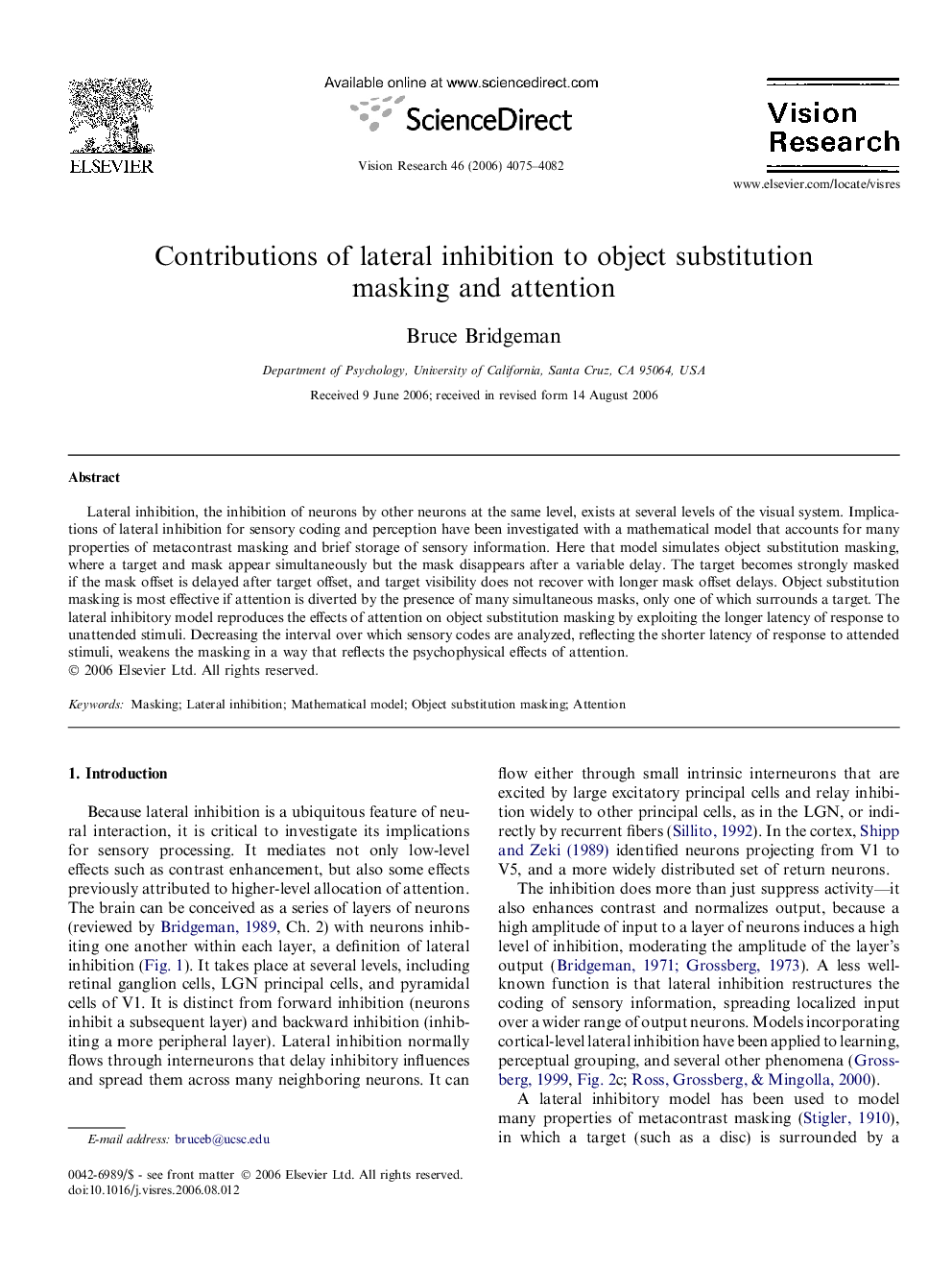| Article ID | Journal | Published Year | Pages | File Type |
|---|---|---|---|---|
| 4035906 | Vision Research | 2006 | 8 Pages |
Lateral inhibition, the inhibition of neurons by other neurons at the same level, exists at several levels of the visual system. Implications of lateral inhibition for sensory coding and perception have been investigated with a mathematical model that accounts for many properties of metacontrast masking and brief storage of sensory information. Here that model simulates object substitution masking, where a target and mask appear simultaneously but the mask disappears after a variable delay. The target becomes strongly masked if the mask offset is delayed after target offset, and target visibility does not recover with longer mask offset delays. Object substitution masking is most effective if attention is diverted by the presence of many simultaneous masks, only one of which surrounds a target. The lateral inhibitory model reproduces the effects of attention on object substitution masking by exploiting the longer latency of response to unattended stimuli. Decreasing the interval over which sensory codes are analyzed, reflecting the shorter latency of response to attended stimuli, weakens the masking in a way that reflects the psychophysical effects of attention.
